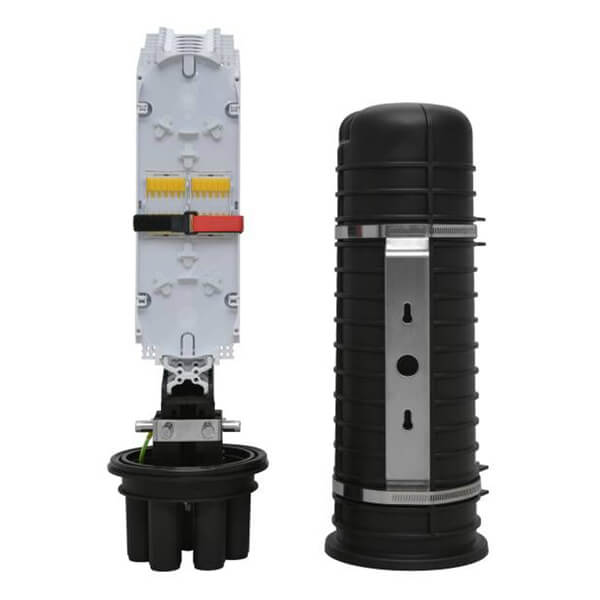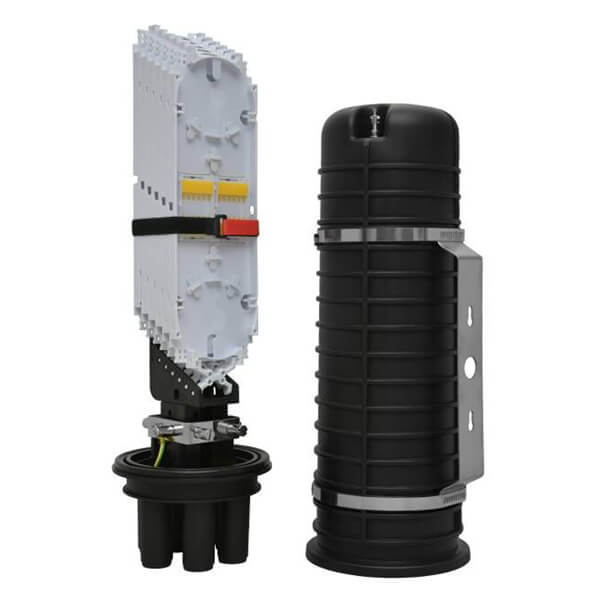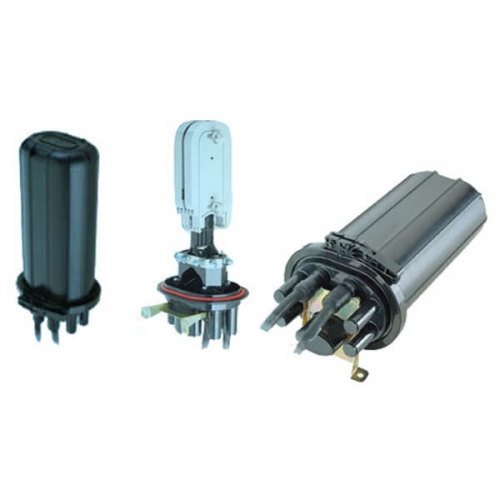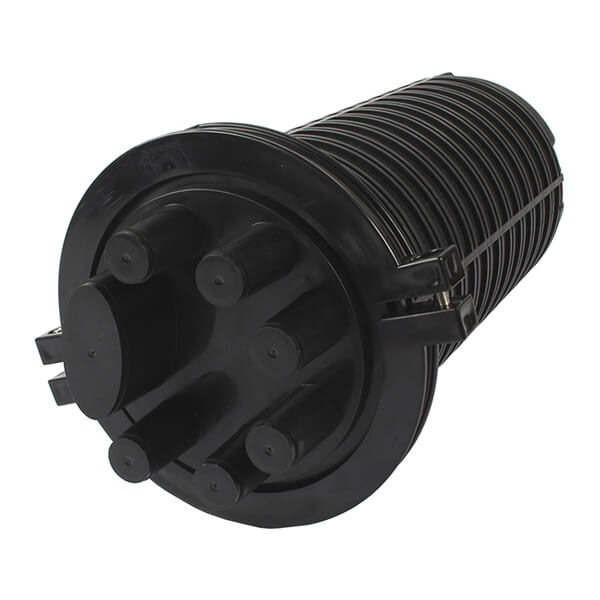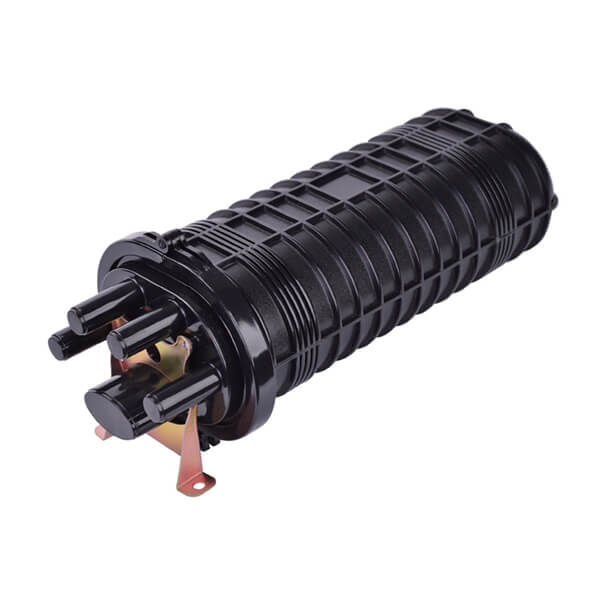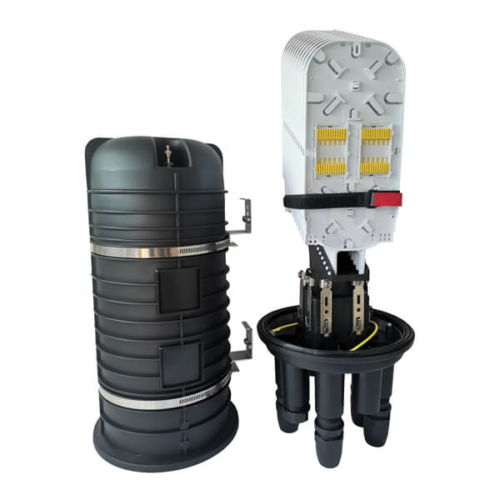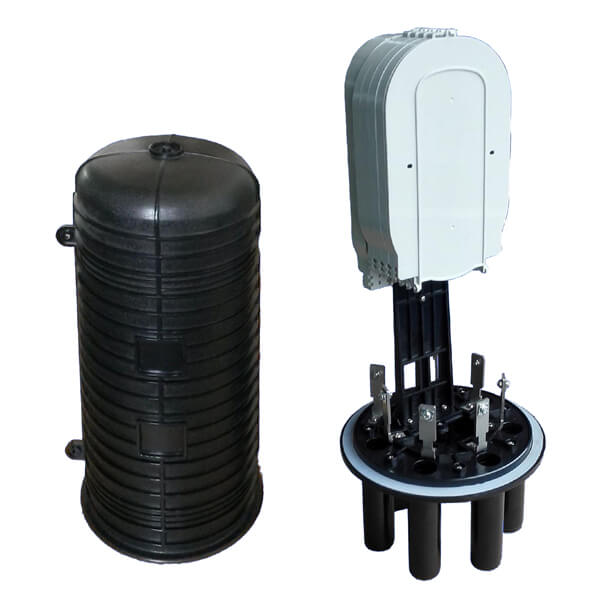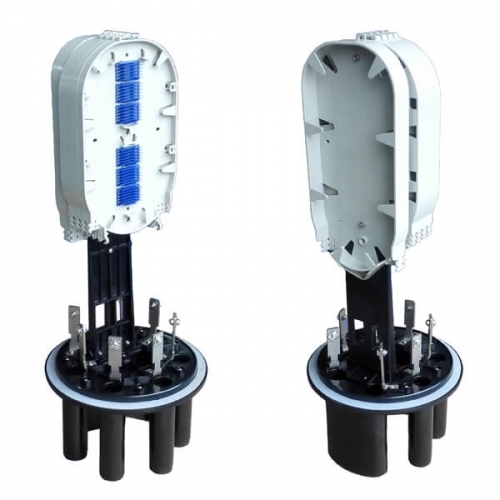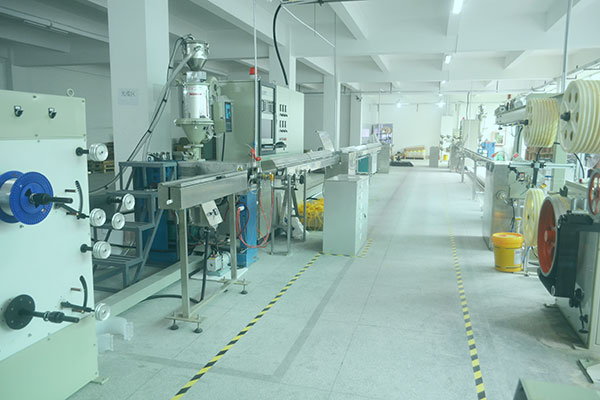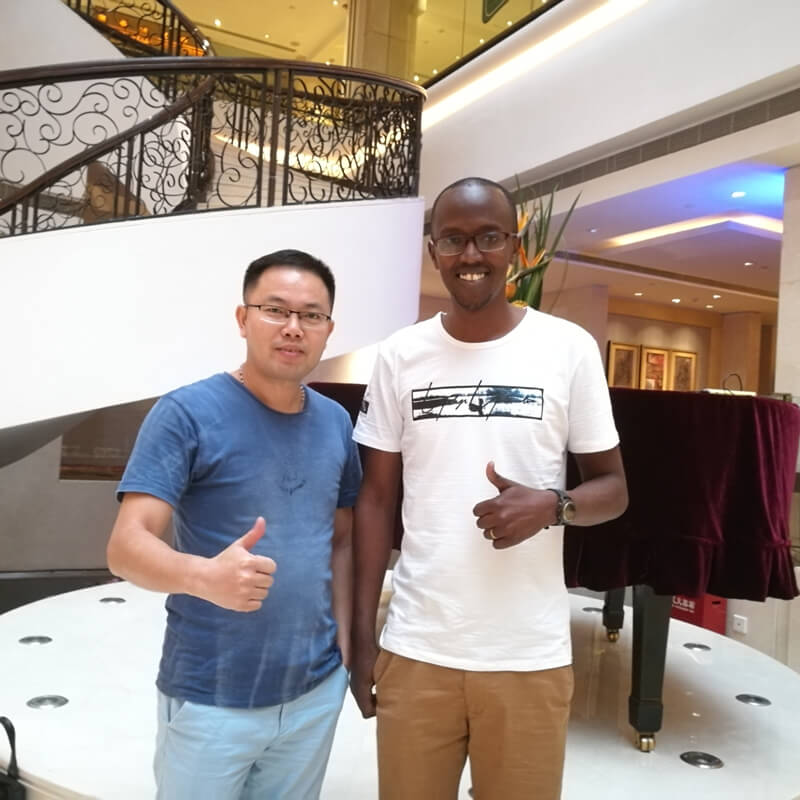Professional Dome Splice Closure Manufacturer From China
Fully kitted with all parts for convenient operation
Overlap structure in splicing tray for easy installation
Fiber-bending radium guaranteed more than 40mm
Easy to install and re-entry with a common can wrench
Excellent Mechanical Sealed to protect fiber and splice ensuring durability.
Stand up to the severe condition of moisture, vibration, and extreme temperatures
With anti-UV, anti-aging, and corrosion-resistant material, suitable for ordinary fiber and ribbon fiber.
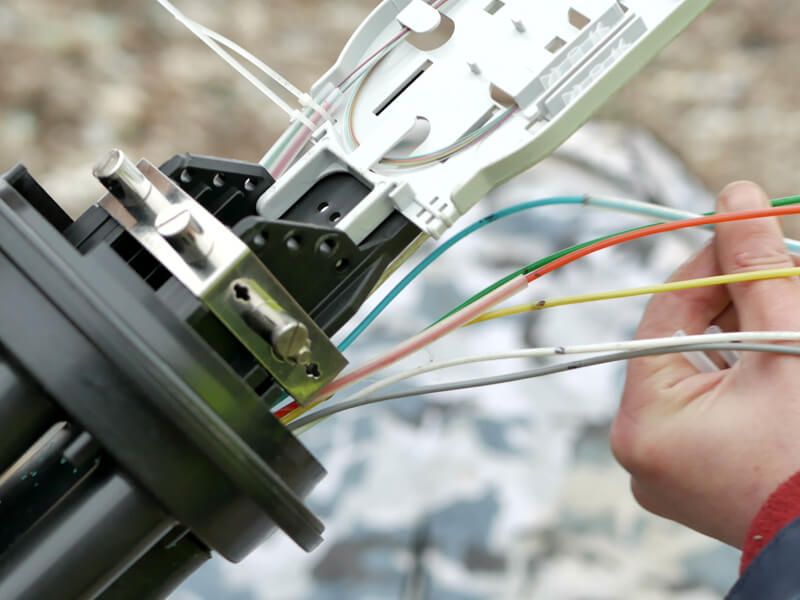
Dome fiber splice enclosure also named fiber optic splice closure, is usually used for outdoor fiber optic cables to be spliced together in the outside plant (OSP).
The fiber optic splice closures and the splice trays inside provide strong protection for the spliced fiber joint and fiber cables. A large variety of fiber optic enclosures ensure durability whether the splice closure is in air, in the pipeline, or buried underground.
Fiber Optic Splice Closure can be installed in aerial, pole mounting, wall mounting, direct buried, and duct mounting, which used for direct connection during the optical fiber transmission process. With good sealing performance, the simple installation and wide application range are the best choices for optical fiber connection.
Featured Dome Fiber Optic Splice Enclosure
1. What is a dome fiber optic splice closure?
The dome fiber optic closure, also known as dome fiber optic splicing closure, is a dome-shaped device designed to offer space and protection for fiber optic cables spliced together. Fiber optic splice enclosures can be made from different materials, depending on where they will be used. Usually, they are made from rugged plastic or sometimes even stainless steel.
The dome fiber optic splice closure connects and stores optical fibers in a safe way either in the outside plant or indoor buildings. It can provide protection for the fiber joint and the fiber cables due to the fact that it has excellent mechanical strength and a strong outer shell, which ensures the joints inside the closure will not be damaged by the harsh condition in the exposed environment.
2. What is the structure of the dome fiber optic splice closure?
The structure of a dome fiber optic splice closure is quite complex and it usually consists of a cover、pedestal、splice tray、hoop、optical cable storage box. The cable entry ports are covered with heat-shrinkable tubes. Inside the splice closure, there are several round ports. The other important element in the closure is the elliptical port, which can hold two stick optical cables.
The case body of the closure is made from imported high-intensity engineering plastics(PP) and the closure is formed in the shape of mold plastics under high pressure. With the advantages of less weight, high mechanical intensity, corrosive resistance, anti-thunderstruck, and long service life, it is a frequently used closure in buildings and other complex electrical systems. In addition, the dome fiber optic splice closure is also equipped with small tools that could control the temperature of the closure.
3. What are the characteristics of the dome fiber optic splice closure?
The dome fiber optic splice closure is a dome-shaped closure with multiple functions and the main characteristics of it including:
- Stackable splice trays, easy to open and maintain
- Splice trays can be easily increased and reduced according to their capacity
- The bending radius of fiber at any place is greater than 30mm
- The mechanical or heat-shrinkable seal can be used according to the requirements of certain conditions, which makes maintenance and capacity increase more convenient.
- Has a high-quality material configuration, and can withstand high temperature, humidity, and other harsh external environment, to ensure the quality and safety of communication.
- The plastic parts of the products are molded by high-strength engineering plastics, and the external fasteners and structural parts are made of high-quality stainless steel materials.
- The weld plate is hinged at one end and each weld plate does not influence the other, which can avoid the transition pipe knotting that could lead to increased loss.
- Optical fiber can be interchanged between the plates, which could enhance the flexibility of the dome fiber optic splice closure and can be qualified to meet the needs of the installation.
- Mechanical seal and heat shrink seal are combined.
- Can be used for cable bridging, electric distribution, branching, and reparation, suitable for pipes, directly buried, and on other occasions. It can be applied to loose sleeves, skeleton, and ribbon cables.
- Convenient for line design, management, and maintenance.
- Compatible with splitter and other optical passive devices, easy construction.
4. What are the advantages of the dome fiber optic splice closure?
A dome fiber optic splice closure design supports mass fusion splicing or single fusion splicing, and easy splice tray access. And its tray design allows the removal from the stack to enable multiple splicers to work simultaneously in 4 port end plates. The segmented design of the dome fiber optic splice closure makes it possible for electricity to gain independent access to each cable port without disrupting surrounding cables. What makes it more unique and functional is that it includes flexible grommet sealing technology applications. And its flexible grommet sealing technology supports a wide range of flat and round cable profiles.
5. What are the applications of a dome fiber optic splice closure?
The dome fiber optic splice closure protects spliced fibers in a hermetically sealed encasement and can be applied underground or in a man/handhole. Grommet kits are included to allow for flexibility in cable size while sealing entry/exit points to provide the outside seal. Ribbon or buffer tube splice trays can be installed inside the closure, allowing for versatility in splicing and organization. The cable restraint hardware inside the closure provides proper pull-out strength and restricts the cables inside the closure from intervening with each other. With these features in effect, it has a wide range of applications. The most common areas where the dome fiber splice closure is applied to are in the aerial, buried, and manufacturing sectors.
6. How much does a dome fiber optic splice closure cost?
The price of a dome fiber optic splice closure usually costs around 100 dollars and it may vary in accordance with factors including its size, type, or raw material.
7. What are the factors you need to consider when choosing a dome fiber optic splice closure?
The optical network structure is often very complicated, especially since the optical access part has unique demands to work well. A reliable fiber optic splice closure will eliminate lots of unnecessary issues. For example, in a network distribution system, a long-lasting, durable optical closure can help managers reduce the frequent check of the access link part. And because the network reaches the distribution stage and drop lines, a dome fiber optic splice closure that allows adding more connections into the closure will be a desirable one. The following factors will help you choose the right fiber optic splice closures and protect the fiber optics in your network.
- Cable compatibility
A good fiber optic closure shall be capable of accepting any fiber optic cable as specified in the specification document. Thus, it is necessary to figure out cable compatibility before selecting a proper closure type—the design of a dome fiber optic splice closure changes with the application areas. Therefore, a dome fiber optic splice closure for aerial usage will have a different design from that used for the underground application.
- Numbers of cable ports
The cable port has another name, which is the cable entrance capacity. The number of ports in a fiber optic closure represents its capacity to handle the number of cables. The cable entrance capacity of a dome fiber optic splice closure refers to the number of ports capable of terminating the cable within the closure. The number of ports provided in a closure relies on factors such as the network capacity and the number of cables used in the network. Usually, smaller ports shall be utilized for branch cables and drop cables to reduce the size of high-capacity closures.
- Termination system
Before choosing the splice closure type, the cable termination system should be designed to provide sufficient mechanical strength between the cable and closure to make sure it performs as expected throughout its lifetime. The materials used for fiber optic splice closures shall also be capable of minimizing or reducing the influence of relative motions between cable components because the materials used in optical fibers, due to the high electric pressure, are easy to thermal expansion and contraction.
- Types of splices
The splice trays within the dome fiber optic splice closure cannot hold enough cables if the cables do not be spliced properly. Usually, ribbon or mechanical splices feature a larger size, which may lead to capacity loss of the closure trays. A suitable configuration of the splices can prevent installation problems at its best and help improve the performance of the closure. Therefore, the types of splices should be considered when choosing a dome fiber splice closure.
- Bonding & Grounding
Proper bonding and grounding of conductive materials of the optical network shall be needed for the safe deployment and operation of the network. And it may vary in accordance with the size or function of the closure. Hence, it is a necessity to consider the bonding and grounding performance of the dome fiber optic splice closure to make sure that it could undertake the workload it is going to be applied.
- Hardware and accessors
Aerial fiber optic closures may need to hang on the messenger wire depending on the network configuration. Or they may be attached to the pole. In both cases, extra hardware is required together with the closures. The hardware or accessories to attach and secure the closure should be able to withstand wear and tear and also harsh environmental stresses.
- Cable management
Keeping a low bend radius in fiber cable installations is necessary. The link performance may be affected if this factor is ignored. A dome fiber optic splice closure that can support functional cable management should be considered when choosing the right dome fiber optic splice closure. And dome fiber optic splice closures that allow for easy installation can reduce excessive stress or damage during the operation of the closure.
- Optical properties
The remaining optical fiber in the cable connector box is coiled in the optical fiber placement device. During the installation of the closure and use of the cable connector box, the dome optical fiber connector should have no obvious additional attenuation.
- Folding sealing performance
After the cable connector box is packaged according to the prescribed operating procedures, the charging pressure in the cable connector box is (100士5) kPa, soaked in the water container at a room temperature that should allow stable observation for 15 minutes without bubbles escaping, or stable observation for 24 hours barometer indication that shows no change.
- Folding and resealing performance
The cable connector box was packaged three times in accordance with the prescribed operating procedures and then tested. The filling pressure in the cable connector box is l00kPat5kPa, soaked in the water container at room temperature stable observation for 15 minutes that should not allow bubbles escape, or stable observation 24 hours barometer indication that appears no change.
- Folding mechanical properties
After the following tests, cable joint box body and box parts should be no changed, when necessary to do a light inspection or open the box body inspection. The following tests should be in the cable connector box filled with human (60 士 5) kPa pressure, pressure should be no change after the test; in the clear water container immersed in normal temperature, there should be no bubble escape for 15 minutes or no change in the barometer index for 24 hours. The shell and its components should have no cracks, damage, or obvious deformation.
Besides, while choosing proper-sized dome fiber optic splice closures, you have to look for components that meet all these conditions:
- It should be durable—lasts for years, without damage.
- It should be resistant to pressure—the box should be resistant to compaction and external pressure.
- It should be waterproof—so that it can keep the cables inside the closure free from moisture.
- It should effectively seal the cable—so as to keep it away from dirt, dust, and other particles that will probably prevent the normal functioning of the cable.
- It should be versatile—to protect different fibers and handle different placements.





